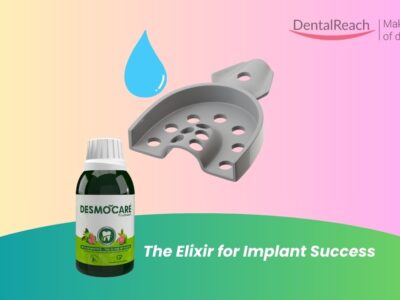World antibiotic awareness week (November 11-17)
The usage of antibiotics started in 1928, after the discovery of penicillin by Fleming. In between 1950s and 1960s, the spread of antibiotics in western countries and then in all the continents caused a progressive change of resistance of microorganisms. The reduction of pathologies of infectious origins allowed a progressive development in daily life in various countries like American, Europe, and in the Soviet Union. Vaccines are used with a high level of safety in order to reduce morbidity and mortality. Use of antibiotics and vaccines caused a drastic reduction of the significance of diseases.
Antibiotic Prophylaxis is recommended in various dental procedures. Recommendations are based on the guidelines of American Heart Association and the American Academy of Orthopaedic Surgeons:-
- Scaling and root planning of teeth
- Periodontal procedures
- Tooth extraction procedures
- Suture removal
- Biopsies
- Implants
- Endodontic procedures
Antibiotics for odontogenic infections: Treatment should be given in some acute situations of odontogenic infection pulp origin as a complement to root canal treatment.
Antibiotics for non-odontogenic infections: Non-odontogenic infections includes both specific infections (tuberculosis, syphilis, leprosy) and nonspecific infections of the oral cavity. Treatment usually includes clindamycin, fluoroquinolones (ciprofloxacin, norfloxacin and moxifloxacin) and, in the case of third generation fluoroquinolones (moxifloxacin).
Antibiotic overuse and misuse among dentists is substantial. It is of worldwide concern because of the spreading and developing resistance of most common bacteria to most inexpensive generic antibiotics. Improving the quality and the quantity of medication will need professional and public education towards rational use of antibiotics.
American diabetes Month (November)
Approximately 29 million people living in the United States have diabetes which is around 9% of the total population. Diabetes affects your body’s ability to process sugar. In Type I diabetes, the immune system mistakes the body’s own cells for foreign invaders. The immune system destroys the insulin-producing beta cells in the pancreas which results in the inability of the body to produce insulin. In Type II diabetes, our own body stops reacting to insulin. The body still produces insulin, but it’s unable to use it efficiently. Both these types result in high blood sugar levels which in turn can cause multiple problems in our body. Managing your blood sugar level is a key to success. Higher blood sugar levels may result into the following conditions:
- Tooth cavities: The acids in plaque attack the surfaces of your teeth (enamel and dentin) which can lead to cavities.
- Early gum disease (gingivitis). Diabetes reduces your ability to fight bacteria which leads to various gum diseases.
- Advanced gum disease (periodontitis): Left untreated, gingivitis can lead to a more severe infection called periodontitis, which destroys the soft tissue and bone that support your teeth. Diabetes slows down body’s healing process and reduces the ability to resist infection.
- Thrush/fungal infection: People with diabetes may be more likely to develop thrush, which is a fungal infection caused by the yeast Candida albicans. You can observe few signs like painful white or red patches inside your mouth.
- Dry mouth (xerostomia): Some people with diabetes also experience a lack of saliva, a condition known as dry mouth. Lack of saliva indicates risk of tooth decay, gum disease and thrush.
Few tips for your proper dental care:-
- Make a commitment to manage your diabetes.
- Must brush your teeth twice a day.
- Use floss or waterpik at least once a day.
- Look for early signs of gum disease.
- Don't smoke.
- Schedule your regular dental visits.
Managing diabetes is a lifelong commitment which includes proper dental care.
Prematurity Awareness Month (November)
Birth of a baby of less than 37 weeks gestational age is termed as preterm baby. The cause of preterm birth in many situations is elusive or unknown. Such infants are at greater risk for short and long term complications including impediments in growth and mental development. The prevalence of oral defects in the primary as well as in the permanent dentition has been reported to be higher in premature infants. India is the prime contributor to the world’s prematurity liability with almost 3 million premature births out of 15 million worldwide preterm births reported each year.
Effects of preterm birth on the oral structures:

- Structural changes in the crowns: Enamel: enamel opacity and enamel hypoplasia & Crown dilaceration
- Palatal distortions : Increase in height of the palate
- Distortions of dental arches: Retardation of dental growth and development
- Delay in eruption of the primary dentition and in the permanent dentition
1. Structural changes in the crowns:
- Effects on dental enamel such as enamel hypoplasia and enamel opacity: Enamel defects are well studied complication of prematurity. The most evident oral effects of preterm birth is changes in dental enamel and are classically present as enamel hypoplasia or as enamel opacity. Enamel hypoplasia is a term that denotes incomplete or underdeveloped tooth enamel resulting from developmental aberrations which may occur in the form of pits, grooves or larger areas of missing enamel. Enamel opacity is qualitative change in the translucency of the enamel.
- Crown dilacerations: In few children, the local traumatic forces from laryngoscopy or endotracheal intubation may be sufficiently severe to cause dilacerations of the crown.
2. Palatal distortions: In many preterm infants, positioning and gravitational forces may cause deviation of the palatal, cranial and facial bones which may alter the facial appearance of the infant. Palatal grooves have been noted in infants who underwent prolonged endotracheal intubation, suggesting that external pressure from the endotracheal tubes may cause deformation of the palate.
3. Retardation of dental growth and development: The timing of primary teeth eruption in premature infants has not been well established. Studies have shown a delay in tooth maturation/ development and eruption among the premature children. In a country like India various contributing factors like inadequate nutrition, increasing stress in females, lack of rest and prolonged intubation for illness are affecting the timing of tooth eruption.
4. Delay in eruption of the primary dentition and in the permanent dentition:
Clinical evaluation of dental development in the primary dentition should be performed, as radiographs are not routinely exposed in kids below 5years of age. Many investigations have shown delayed eruption of primary dentition in preterm children. Some studies in older children have shown delayed dental development which was only limited to the permanent first molars and central incisors.
The lower the birth weight of the children, greater the tendency to develop dental defects. Significant implications in the dental management of preterm children as instructions about the dental health, oral hygiene habits and healthy dietary as well as the adoption of preventive measures are utmost important in preterm children to give them a healthier quality of life.




















Comments